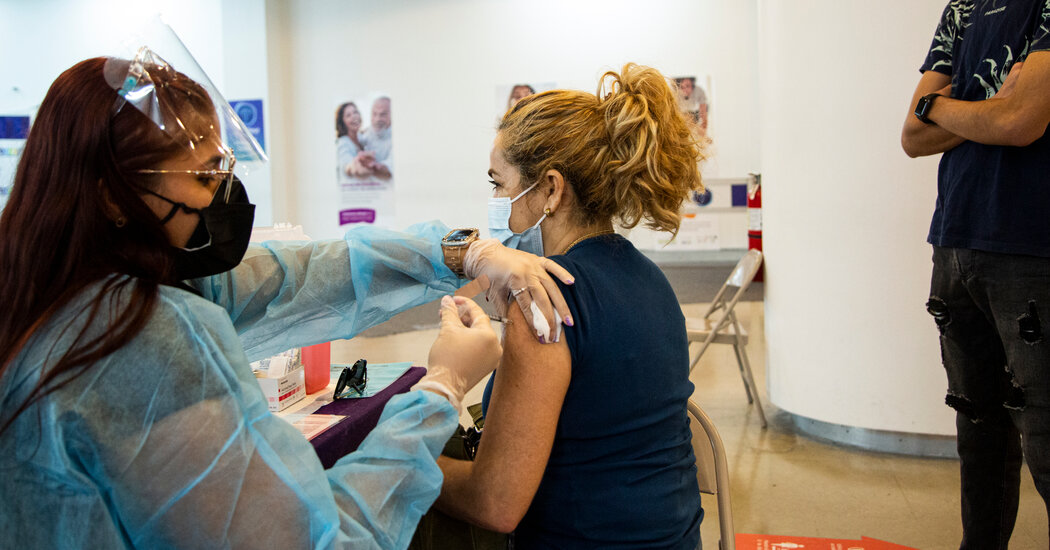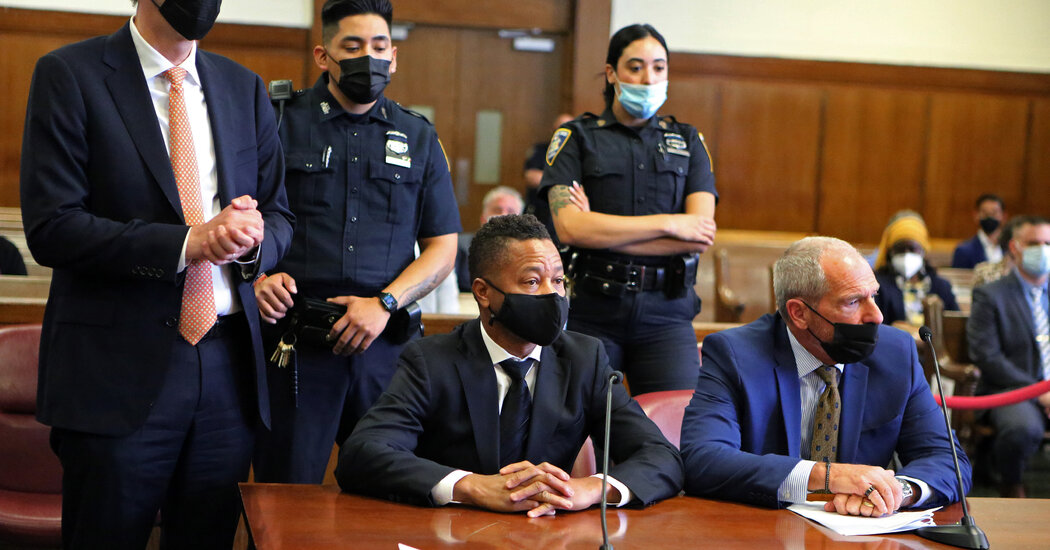
Roseann Renouf, 77, has grown tired of the current generation of coronavirus shots. Having “never been one for a lot of vaccination,” she decided to forgo the latest round of boosters after watching vaccinated friends contract Covid-19, even though the doses offer a critical extra layer of protection.
“It’s just taking another same booster,” Ms. Renouf, a retired nurse anesthetist from Fort Worth, said. “They haven’t done anything different with them to cover new variants.”
But her gripe about the Covid vaccines may soon be settled. American regulators committed last week to updating the 2020 vaccine recipes for this fall’s booster campaign with new formulas meant to defend against the ultra-contagious Omicron subvariants, offering Ms. Renouf and other holdouts a fresh reason to change their minds.
The Biden administration is betting that the new cocktails, the centerpiece of an effort to drastically speed up vaccine development, might appeal to the half of inoculated Americans who have so far spurned booster shots, a key constituency in the fight against future Covid waves.
Vaccine updates are becoming more urgent by the day, many scientists said. The most evasive forms of Omicron yet, known as BA.4 and BA.5, appear to be driving a fresh surge of cases across much of the United States. The same subvariants have sent hospital admissions climbing in Britain, France, Portugal, Belgium and Israel.
Covid deaths in the United States, which had been hovering for months near their lowest levels of the pandemic, are rising again. In the worst case, epidemiologists have predicted some 200,000 Covid deaths in the United States within the next year.
“We’re hoping that we can convince people to go get that booster,” said Dr. Peter Marks, who oversees the vaccines office at the Food and Drug Administration, “and help mature their immune response and help prevent another wave.”
Many scientists believe that updated boosters will be critical for diversifying people’s immune defenses as subvariants eat away at the protection offered by vaccines. Catching up with a virus that has been so rapidly mutating may be impossible, they said. But it was far better to be only a few months, rather than a couple of years, behind the pathogen.
“Omicron is so different that, to me, it seems pretty clear we’re starting to run out of ground in terms of how well these vaccines protect against symptomatic infections,” said Deepta Bhattacharya, an immunologist at the University of Arizona. “It’s very important that we update the shots.”
Now, the question is whether those modified boosters will arrive in time. In a bid to match the latest forms of the virus, the F.D.A. asked vaccine manufacturers to tailor their new shots to the BA.4 and BA.5 subvariants, rather than to the original version of Omicron from last winter.
Virologists said that a subvariant vaccine would generate not only the strongest immune defenses against current versions of the virus, but also the type of broad antibody response that will help protect against whatever form of the virus emerges in the months ahead.
But building a fall booster campaign around vaccines at the forefront of the virus’s evolution could also come at a cost. Pfizer and Moderna said that they could deliver subvariant vaccine doses no earlier than October. Some F.D.A. advisers warned in a public meeting last week that the timeline could be slowed even further by any number of routine delays.
In contrast, a vaccine targeting the original version of Omicron is closer at hand: Moderna and Pfizer have already started making doses tailored to the original form of Omicron, and Moderna said that it could start supplying them this summer. Whether the benefits of a newer subvariant vaccine outweigh the drawbacks of having to wait longer depends on when exactly it arrives and how much havoc the virus wreaks before then, scientists said.
They said that having some form of an updated vaccine by the fall was crucial.
“I would lean toward thinking BA.4, BA.5 is a good choice unless it dramatically extends the timeline,” said Jesse Bloom, a virologist at the Fred Hutchinson Cancer Center in Seattle, voicing support for the subvariant vaccine. “If using BA.4, BA.5 only modestly extends the timeline, I think it’s a good choice.”
The updated shots will test the public’s openness to an accelerated vaccine program that is reminiscent of the way annual flu shots are formulated, but that is entirely new when it comes to the coronavirus.
The original Covid vaccines had to withstand slow and laborious testing: Volunteers took the shots and then went about their lives while researchers tracked who got sick. But there is now ample evidence that the shots are safe. And any tweaks to the recipe could be wasted if scientists were to spend the better part of a year testing them.
Instead, vaccine manufacturers have been studying volunteers’ blood samples in the lab to gauge their immune responses to a booster that is tailored to the first version of Omicron. The subvariant boosters have so far been through lighter testing: Pfizer has studied only how they have affected antibody responses in mice.
The F.D.A. said that it would not require clinical trial data for the subvariant boosters before authorization and would rely instead on studies of boosters targeting the original version of Omicron. Some scientists said that authorizing modified vaccines without time-consuming human studies was essential to keeping up.
“It just seems dangerous to overly bureaucratize the rollout of an updated vaccine,” said Jeremy Kamil, a virologist at Louisiana State University Health Shreveport. Moving too slowly, he said, would risk leaving older and other vulnerable people exposed to a pathogen that looks different than what the original vaccines had prepared them for.
“If a bank robber’s grown a beard and dyed their hair,” he said, “it’s going to help your response to know what they look like today rather than when they were 14 years old.”
Some government vaccine advisers have said that regulators had not yet proven that updated boosters protected substantially better than existing boosters against severe Covid. Others have expressed concern that reformulating vaccines would undercut confidence in the vaccination program.
For some booster-shy Americans, though, the fact that the current offerings had grown dated was the source of their apathy.
“It probably helps a bit, the booster, but not to the extent of going to the trouble of getting it,” said Cherry Alena, a retired medical secretary in her 70s from Northern California, whose last Covid vaccine was 16 months ago. “It’s not specifically formulated for the thing that’s going around.”
A modified shot would appeal to her, she said, because “it gives you specific immunity against the specific thing.”
Gaps in booster coverage have left the United States more exposed to deaths during Omicron waves. More than half of vaccinated Americans have not received a booster. Three-quarters of those eligible for a second booster have not gotten one.
This spring, people age 50 and older who had received a single booster were dying from Covid at four times the rate of those with two booster doses, according to the Centers for Disease Control and Prevention.
There are no certainties when it comes to forecasting the pathogen’s evolution. Come winter, the virus could take an unexpected turn away from the Omicron branch of the evolutionary tree. And whereas flu viruses typically turn over in the course of years, new coronavirus variants can emerge and then start stampeding across the world within months.
But scientists said it was reassuring that the updated boosters — which would also contain a component of the original formulation — appeared to generate strong immune responses to many different versions of the virus. And for now, signs are pointing toward this winter’s virus being a descendant of Omicron.
“The more time that passes, the more likely it is that anything new is going to emerge from Omicron,” said Trevor Bedford, an evolutionary biologist at the Fred Hutchinson Cancer Center.
Even though the coronavirus evolves faster than the flu, Dr. Bedford said, mRNA technology enables Covid shots to be modified more quickly, too. Decisions about the composition of an autumn flu vaccine are typically made in February, he noted; this fall’s coronavirus vaccines are not being decided upon until early summer.
And scientists have a wider window into what coronavirus strains are spreading and how quickly. “With SARS-CoV-2, we have 12 million genomes,” Dr. Bedford said of the virus. “For flu, we have collected 250,000 over decades.”
The F.D.A.’s decision to give its blessing to updated vaccines may have ripple effects across the globe, setting Moderna and Pfizer on the path to making those shots. But some countries may choose boosters targeting the earlier version of Omicron because they will be ready sooner.
Some F.D.A. advisers also said that a vaccine made for the original strain by a third company, Novavax, held promise as an Omicron-targeted booster. That shot is not yet authorized for use.
Scientists said they were eager for a clearer picture of how updated vaccine candidates would be chosen in the future and how quickly they could be made. Some also pressed for closer cooperation between American regulators and the World Health Organization, which supports updating the vaccines but with the original version of Omicron, not its latest subvariants, as a different way of broadening immune responses.
The ultimate goal, many scientists said, was to compress the time between when the next immune-dodging variant emerges and when people can be vaccinated against it.
“We’re now seven months out from when we first detected Omicron,” said Dr. Michael Z. Lin, a professor of neurobiology at Stanford who has tracked the regulatory process. “We need a rapid way for strain selection, and it needs to be more rapid than what we’ve done so far.”
Among those likely to line up for a modified vaccine is Randi Plevy, 57, of New York. Having been vaccinated, and then infected twice, she held off on getting a booster shot.
“Why am I getting a booster if it’s not going to protect me against what’s out there?” she said. “If they can demonstrate you’re getting ahead of the curve, and ‘Here is the latest and greatest that is going to protect you from the next strain,’ I think that’d be really attractive to a lot of people.”




